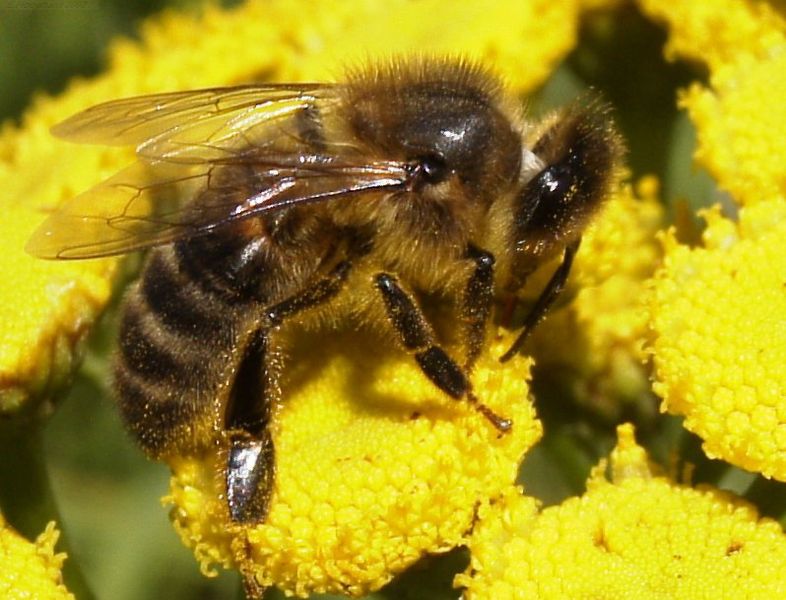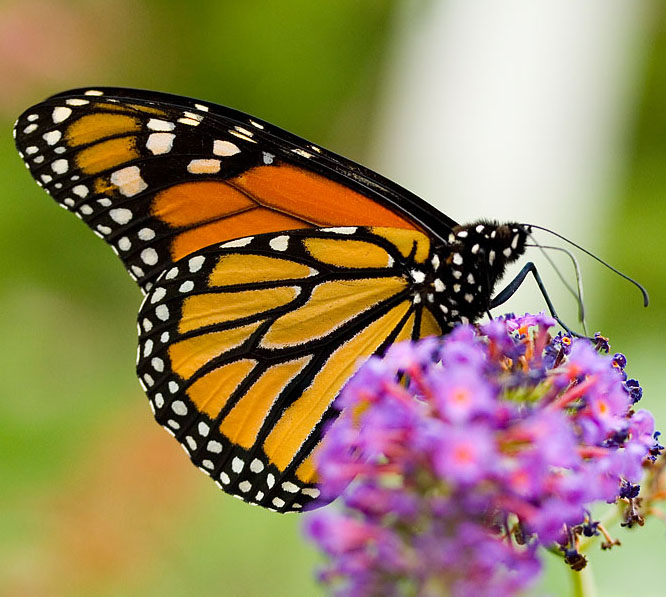When you hear the word “pollinator,” what image comes to mind? It’s likely a honeybee or bumblebee sitting on a flower, or perhaps a butterfly, or maybe even a hummingbird lapping nectar. However, did you know that insects such as flies and beetles can also be pollinators?

Honeybee collecting pollen and nectar by Erik Hooymans
Some, such as honeybees, are generalists, visiting many different species of flowering plants, trees and shrubs in their quest to collect pollen and nectar to bring back for honey production. Others, such as some species of carrion flies, are attracted to a select few plants whose flowers exude the odor of rotting flesh in order to attract their pollinators. While some plants are wind pollinated, the vast majority rely on other living organisms to transfer pollen (and genes) between plants.
Butterflies, bees, beetles and other pollinators are often beautiful to look at and mesmerizing to watch, but they serve a much greater purpose than a simple aesthetic one. The majority of the plant-based foods that we eat directly rely on insect pollination. In the last few years, news articles and reports have been plentiful about honeybee colony collapse and worries about the future of these amazing insects here in the United States. However, there are a number of actions you can take in your garden to attract and help insect pollinators. I’ll focus on bees and butterflies, as they are the most researched, and actions taken to attract them will attract other insect pollinators.
Plants: Insect pollinators require plants for food. What you plant in your yard and garden will have an effect on what insects you attract. For butterflies, keep in mind that while adult butterflies are looking for nectar, larval butterflies require food plants. One prime example is the relationship between monarch butterflies and milkweed. Larval monarchs feed almost exclusively on milkweed plants, while the adults are more generalized in what plants they will take nectar from. Take into account bloom timing and duration, bloom color and plant size when choosing what to include in your garden. Annuals (plants that complete their life cycle within one year), perennials or biennials (plants with a multi-year life cycle), and shrubs and trees will all provide different food sources for pollinators, and some combination of them will work in any garden setting.
Shelter: Aside from food, butterflies, some bees and other insects also require shelter in a garden. Small, sunny areas and areas sheltered from strong winds are especially beneficial here in the western plains where wind is such a constant. A consistent water source, such as a shallow pond or birdbath, is also important. Small trees and shrubs may double roles as food source and shelter depending on their location within the garden.

Monarch butterfly from Wikimedia commons
Insecticides/Pesticides:This is an important topic for pollinator attraction, as most insecticides and pesticides are aimed broadly enough to kill pollinators and other beneficial insects such as pest predators, along with the pest insects such as squash beetles and potato bugs. Even biological controls such as BT (Bacillus thuringiensis), derived from a soil-dwelling bacterium, while not toxic to bees, will readily kill butterfly and moth larvae. The most pollinator-friendly control for pests is attracting pest predators. A well-known example of a pest-pest predator relationship is that of ladybugs and aphids. The ladybugs utilize the aphids and will “manage” aphid populations for their own needs.
Pollinators and other beneficial insects have long-established relationships with plants and ecosystems, and it’s pretty amazing how these systems function when all of the players are active. By planting and maintaining your garden to attract pollinators, you should also start to see other beneficial insects coming in, resulting in a thriving garden mini-ecosystem of insect life.
For information on plant selection, regional appropriateness and growing suggestions, check out the Xerces Society website, www.xerces.org. The site has resources, information and tips for all U.S. states and Canadian provinces. You can also contact your local or regional agricultural Extension office, especially for questions on regionally native plants and pollinators.
And don’t forget birds as pollinators! Get tips on attracting hummingbirds to your yard.
Next Gardening Workshop April 12
Some of the information in this post was derived from a gardening workshop held Feb. 22 in Scottsbluff, Neb., by RMBO and University of Nebraska – Lincoln Extension. The next workshop in this series will be on native plants, set for April 12 at Aulick’s TLC in Scottsbluff featuring Justin Everston of the Nebraska State Arboretum.
~ Maggie Vinson, Nebraska Education Coordinator


